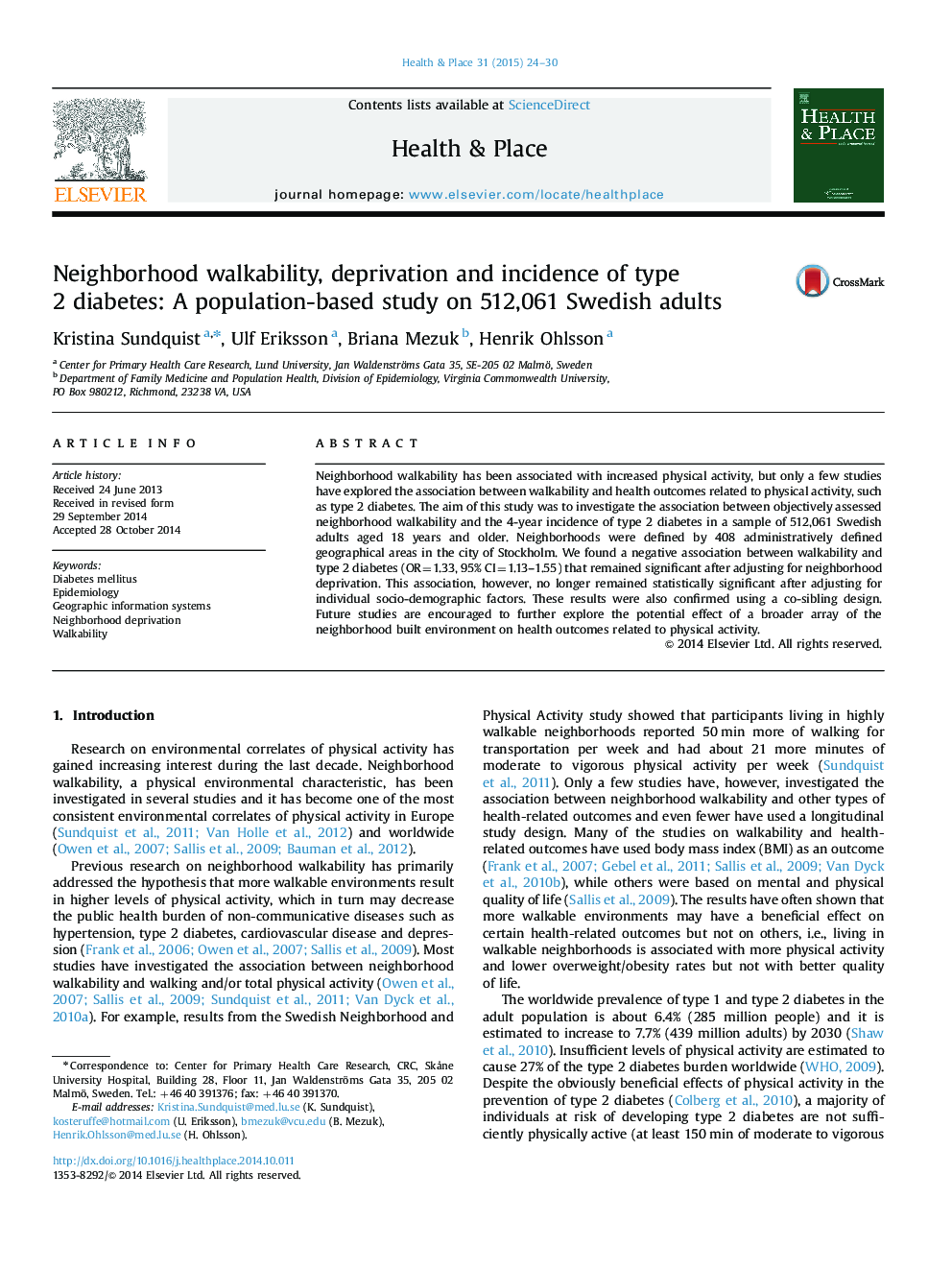| Article ID | Journal | Published Year | Pages | File Type |
|---|---|---|---|---|
| 7458246 | Health & Place | 2015 | 7 Pages |
Abstract
Neighborhood walkability has been associated with increased physical activity, but only a few studies have explored the association between walkability and health outcomes related to physical activity, such as type 2 diabetes. The aim of this study was to investigate the association between objectively assessed neighborhood walkability and the 4-year incidence of type 2 diabetes in a sample of 512,061 Swedish adults aged 18 years and older. Neighborhoods were defined by 408 administratively defined geographical areas in the city of Stockholm. We found a negative association between walkability and type 2 diabetes (OR=1.33, 95% CI=1.13-1.55) that remained significant after adjusting for neighborhood deprivation. This association, however, no longer remained statistically significant after adjusting for individual socio-demographic factors. These results were also confirmed using a co-sibling design. Future studies are encouraged to further explore the potential effect of a broader array of the neighborhood built environment on health outcomes related to physical activity.
Keywords
Related Topics
Health Sciences
Medicine and Dentistry
Public Health and Health Policy
Authors
Kristina Sundquist, Ulf Eriksson, Briana Mezuk, Henrik Ohlsson,
